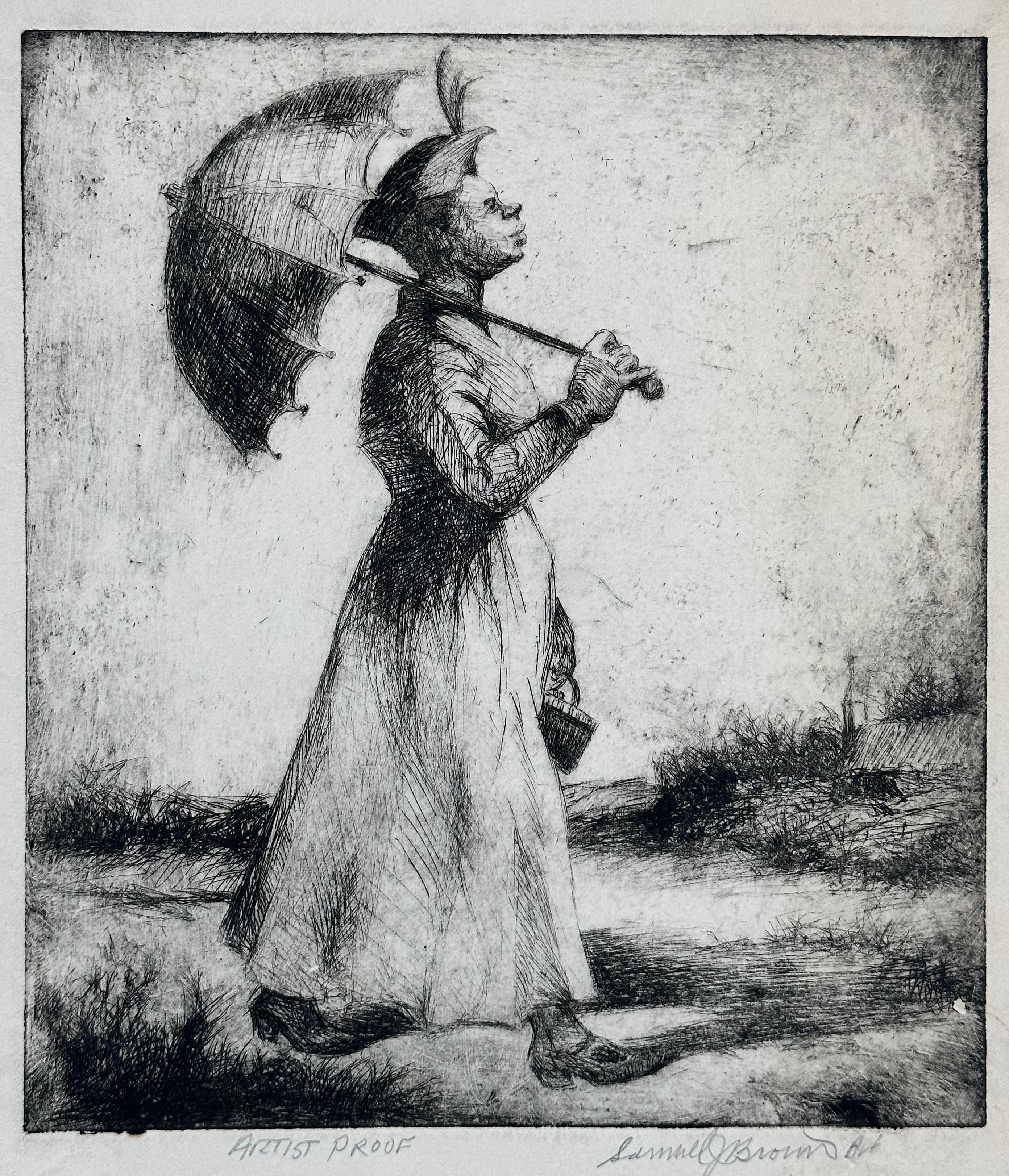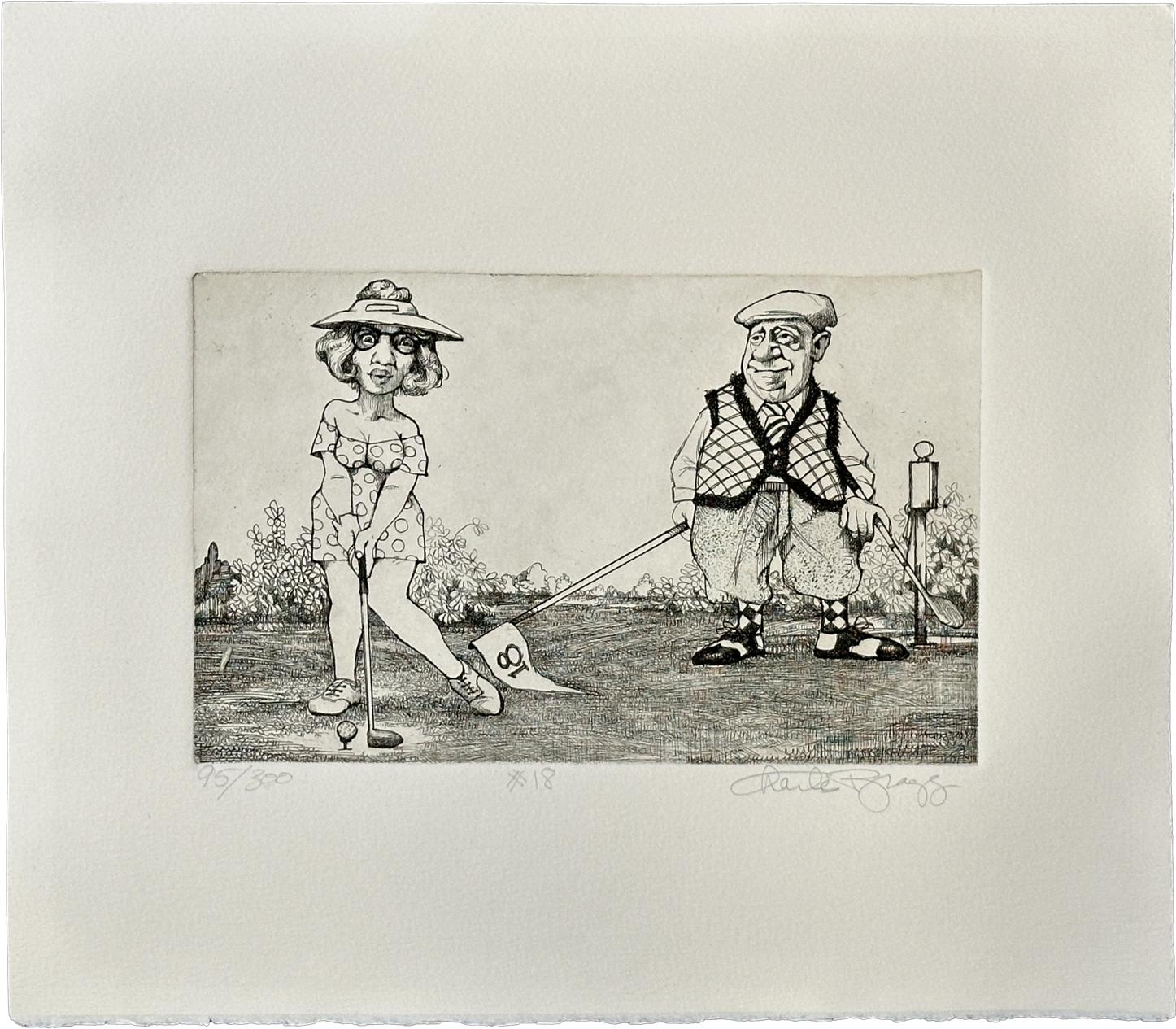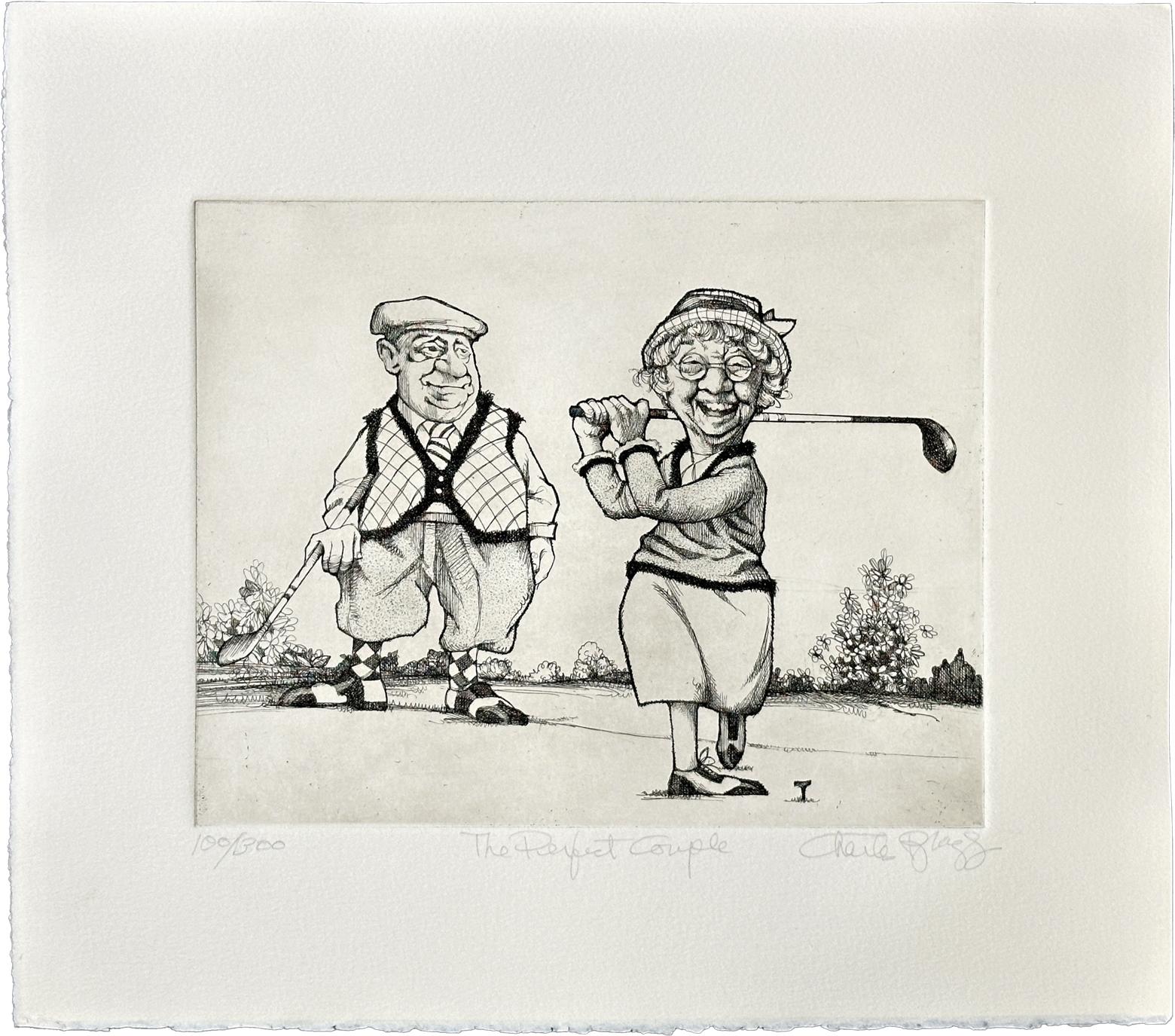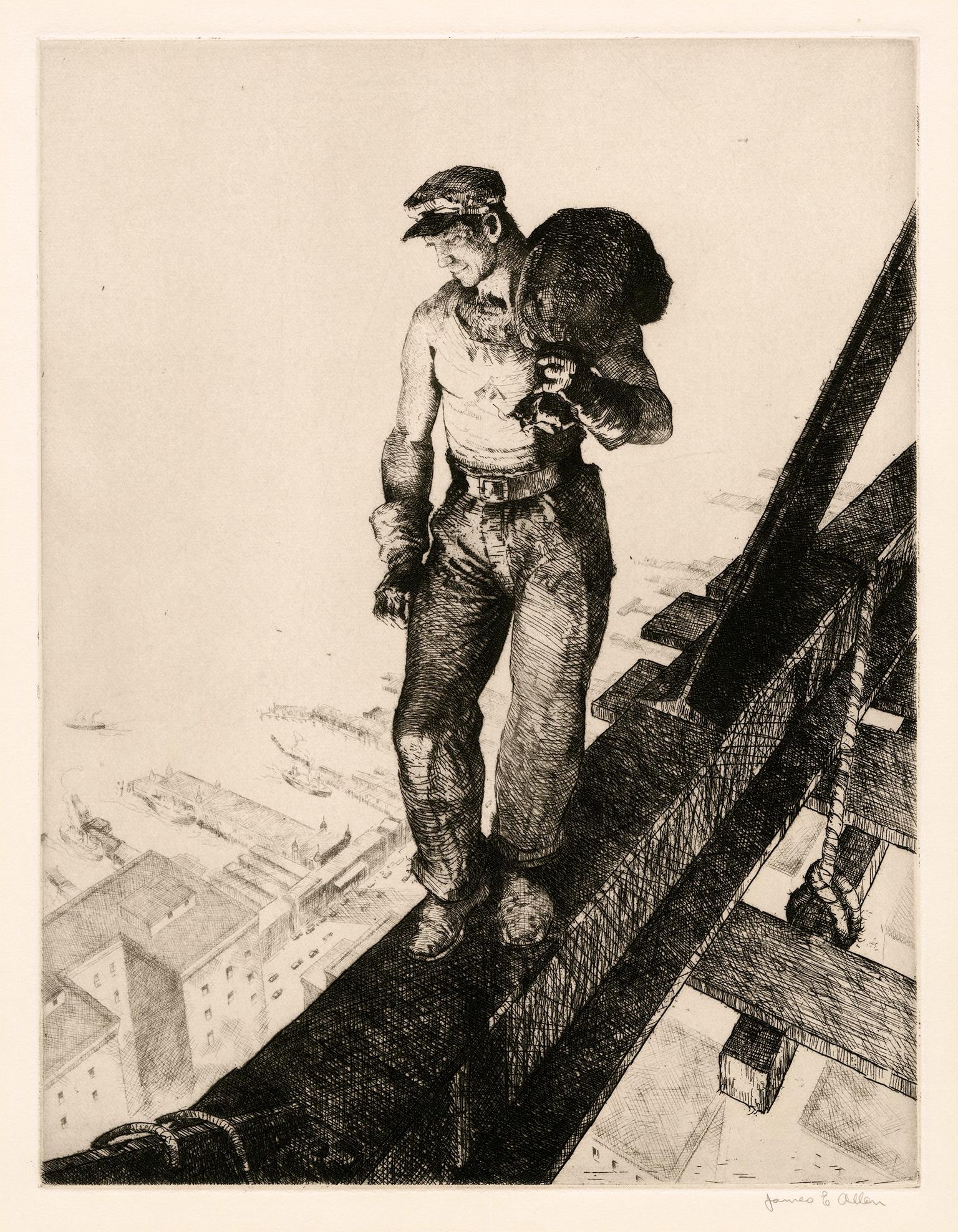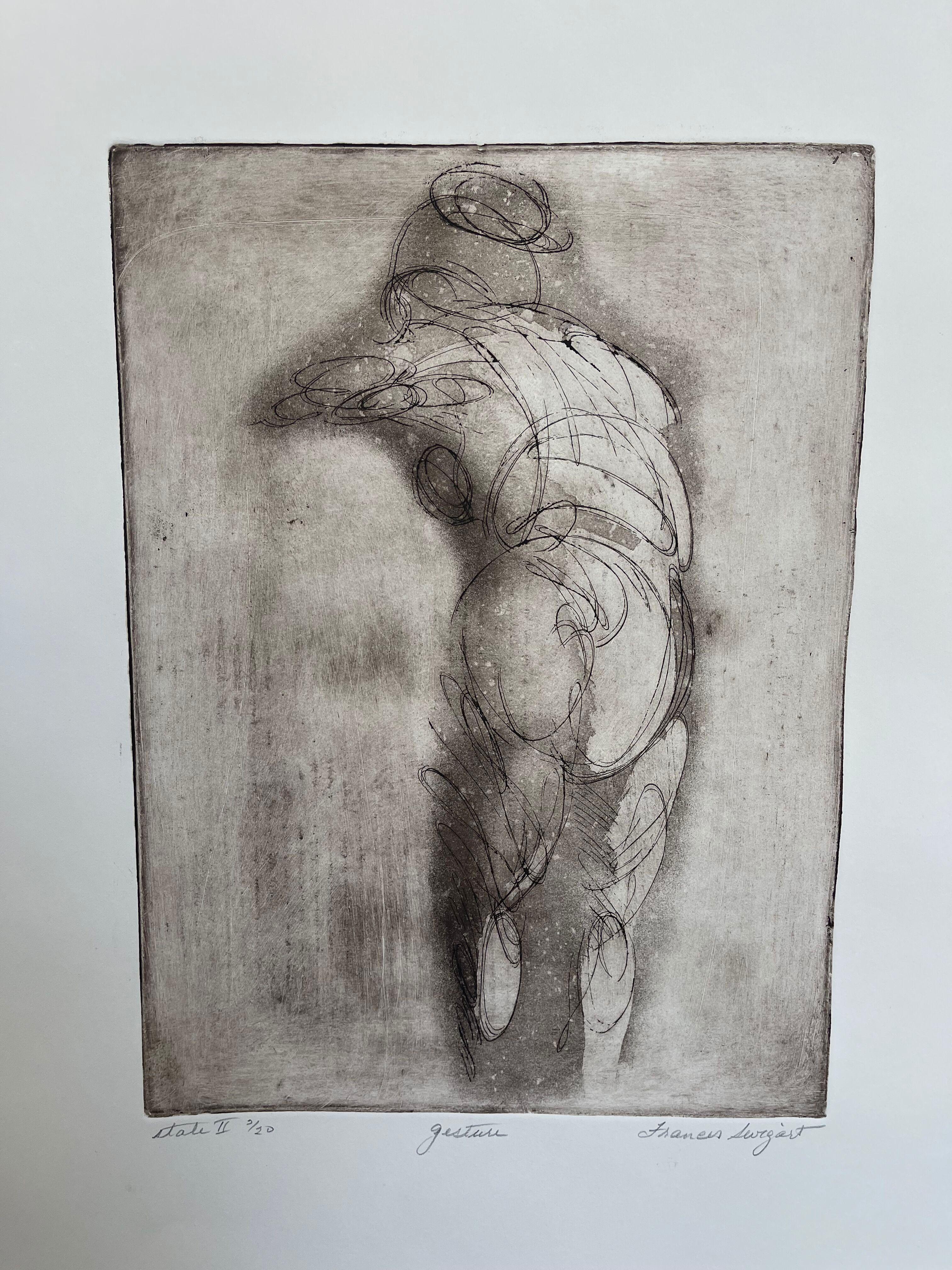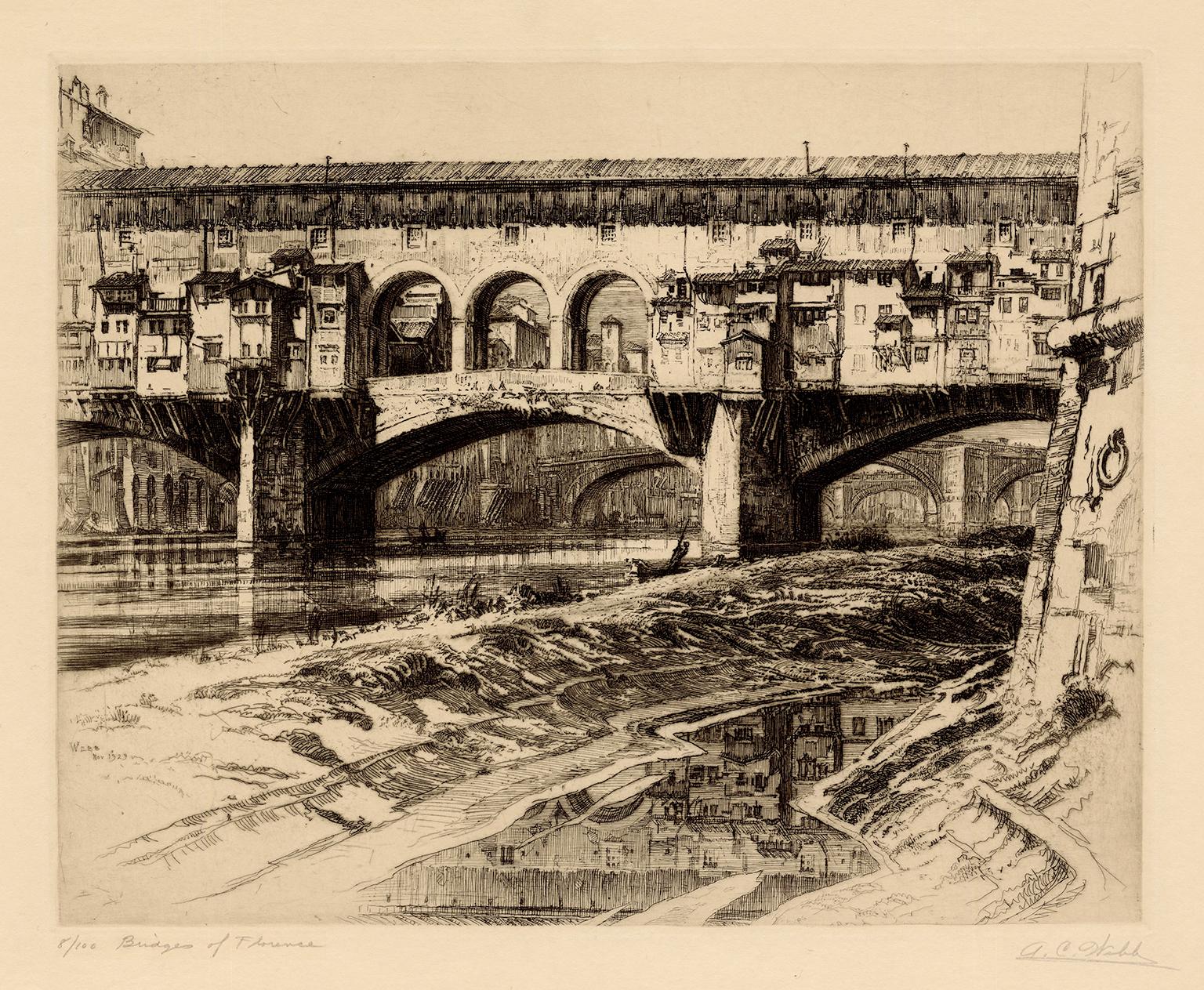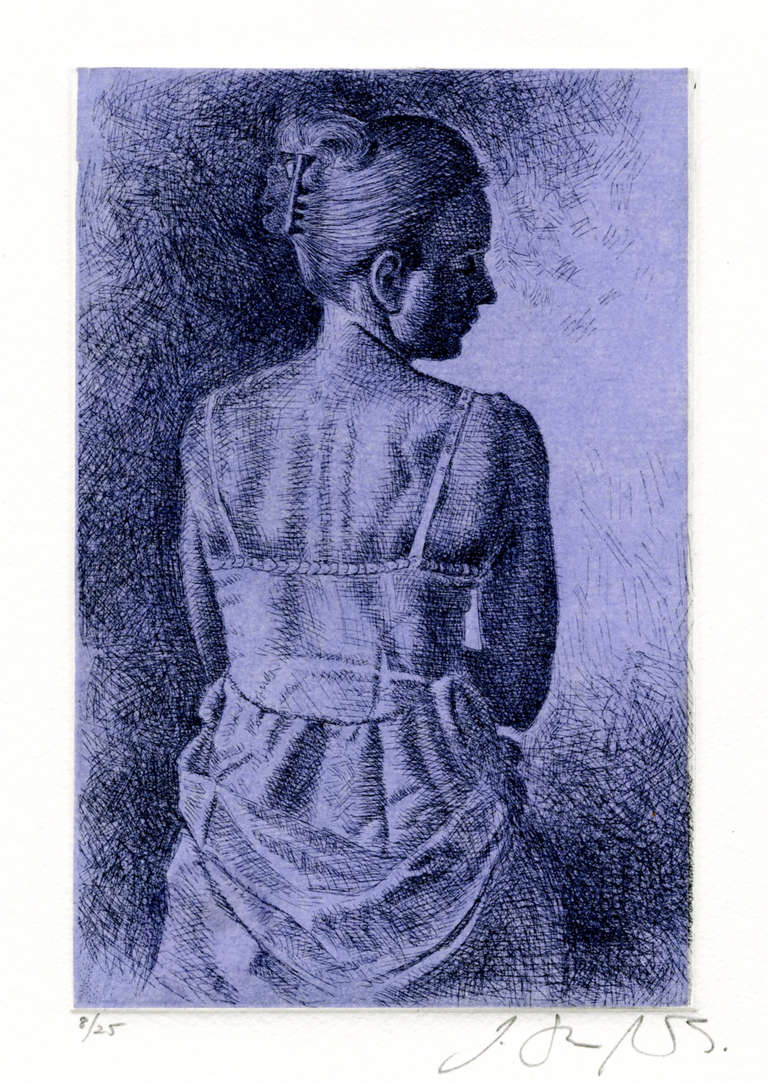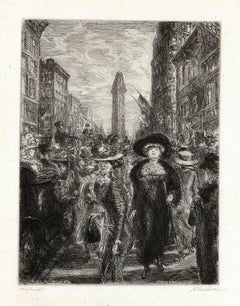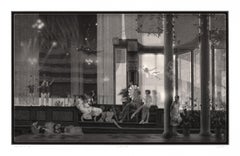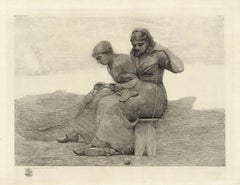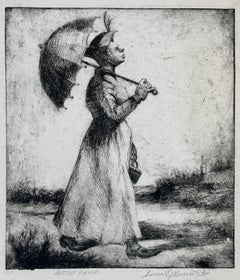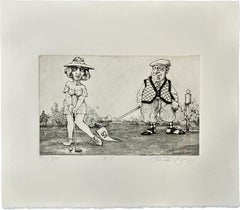
Canoeman.
View Similar Items
Want more images or videos?
Request additional images or videos from the seller
1 of 8
Frank BensonCanoeman.1919.
1919.
About the Item
- Creator:Frank Benson (1976, American)
- Creation Year:1919.
- Dimensions:Height: 20 in (50.8 cm)Width: 16 in (40.64 cm)Depth: 1 in (2.54 cm)
- Medium:
- Movement & Style:
- Period:
- Condition:
- Gallery Location:New York, NY
- Reference Number:Seller: #43688-21stDibs: LU33121731483
About the Seller
4.6
Recognized Seller
These prestigious sellers are industry leaders and represent the highest echelon for item quality and design.
Established in 1898
1stDibs seller since 2015
50 sales on 1stDibs
Typical response time: 1 to 2 days
Associations
International Fine Print Dealers Association
More From This SellerView All
- Fifth Avenue, 1909.By John SloanLocated in New York, NYSupposedly inspired by an earlier photograph, Sloan created this etching in 1941 depicting ‘Ladies Mile,’ a fashionable hot spot located on Fifth Avenue north of 23rd street. The Fl...Category
1940s American Realist Figurative Prints
MaterialsEtching
- Sight Lines II : The Green RoomBy Peter MiltonLocated in New York, NYSIGHT LINES II : THE GREEN ROOM. This archival digital print was created in 2010. This original print was directly drawn into the computer by Peter Milto...Category
21st Century and Contemporary American Realist Figurative Prints
MaterialsDigital
- Mending the TearsBy Winslow HomerLocated in New York, NYWinslow Homer created this etching entitled “MENDING THE TEARS” in 1888. This is a lifetime impression signed by Homer and printed by the famous New York etcher George W. H. Ritchie...Category
1880s American Impressionist Figurative Prints
MaterialsEtching
- On the KedgwickBy Frank BensonLocated in New York, NYFrank Benson created the etching "On the Kedgwick" in 1923, in an edition of 150. This impression is the second state of four. There are five known impressions of the second state. It is signed in pencil and inscribed "B-1" and "1 or 5" at the lower left paper edge (pencil). The image size 7 13/16 x 11 7/8" (19.9 x 30.2 cm) and sheet size 15 3/8 x 11 1/2" )29.3 x 39 cm). It is listed in the Frank W. Benson catalogue raisonne by Paff #222. FRANK W. BENSON (1862-1951) Frank Weston Benson, well known for his American impressionist paintings, also produced an incredible body of prints - etchings, drypoints, and a few lithographs. Born and raised on the North Shore of Massachusetts, Benson, a natural outdoorsman, grew up sailing, fishing, and hunting. From a young age, he was fascinated with drawing and birding – this keen interest continued throughout his life. His first art instruction was with Otto Grundman at the Museum of Fine Arts in Boston, and then in 1883 in Paris at the Academie Julian where he studied the rigorous ‘ecole des beaux arts’ approach to drawing and painting for two years. During the early 1880’s Seymour Haden visited Boston giving a series of lectures on etching. This introduction to the European etching...Category
1920s Impressionist Figurative Prints
MaterialsEtching
- Garden with HenryBy Peter MiltonLocated in New York, NYPeter Milton created this etching and engraving entitled “GARDEN WITH HENRY” in 1993. It is signed, titled, dated, and inscribed “153/250” in pencil under the image. The printed image size is 9.5 x 12 inches and the paper size is 15.5 x 18 inches. The inspiration for this piece came from the Henry James novella “The Aspern Papers” and clearly depicts the Venetian setting. The American-British author Henry James (1843-1916) wrote “The Aspern Papers” first published in 1888. Peter Milton was born in Pennsylvania in 1930. He studied for two years at the Virginia Military Institute...Category
1990s Realist Landscape Prints
MaterialsEngraving, Etching
- Running the RapidsBy Frank BensonLocated in New York, NYThe etching "Running the Rapids" was created by Frank Benson in 1927. Printed in an edition of 150, this impression is signed in pencil, lower left. The image size is 5 13/16 x 7 7/8" (14.8 x 20 cm) and sheet size 8 1/16 x 10 5/16" (20.3 x 26.2 cm). Frank Weston Benson (1862-1951), well known for his American impressionist paintings, also produced an incredible body of prints - etchings, drypoints, and a few lithographs. Born and raised on the North Shore of Massachusetts, Benson, a natural outdoorsman, grew up sailing, fishing, and hunting. From a young age, he was fascinated with drawing and birding – this keen interest continued throughout his life. His first art instruction was with Otto Grundman at the Museum of Fine Arts in Boston, and then in 1883 in Paris at the Academie Julian where he studied the rigorous ‘ecole des beaux arts’ approach to drawing and painting for two years. During the early 1880’s Seymour Haden visited Boston giving a series of lectures on etching. This introduction to the European etching...Category
1920s American Impressionist Figurative Prints
MaterialsEtching
You May Also Like
- Saul Kovner "Bronx Park" EtchingLocated in San Francisco, CASaul Kovner: 1904-1981. Well listed American artist. He was born in Russia, but studied and lived in NYC and California. This is a rare etching, as I can n...Category
1930s American Realist Figurative Prints
MaterialsEtching
- Sunday MorningLocated in Wilton Manors, FLSunday Morning. Title: Sunday Morning Artist: Dox Thrash (American, Griffin, Georgia 1893–1965 Philadelphia, Pennsylvania) Printer: Sam J. Brown (1901-1994). Date: ca. 1939. Medium: Drypoint Dimensions: sheet: 12 5/8 x 10 5/8 in. (32 x 27 cm) plate: 8 7/8 x 7 7/8 in. (22.5 x 20 cm) This is the most heavily inked, atmospheric example known to exist. Unique, unsigned example from the collection of artist Samuel J. Brown. Dox Thrash (1893–1965) was an African-American artist who was famed as a skilled draftsman, master printmaker, and painter and as the co-inventor of the Carborundum printmaking process.[1] The subject of his artwork was African American life. He served as a printmaker with the W.P.A. at the Fine Print Workshop of Philadelphia. The artist spent much of his career living and working in Philadelphia, Pennsylvania.[1] Early life Dox Thrash was born on March 22, 1893, in Griffin, Georgia.[2] He was the second of four children in his family. Thrash left home at the age of fifteen in search of work up north. He was part of the Great Migration (African American) looking for industrial work in the North. The first job that Thrash got was working with a circus and a Vaudeville act. In 1911, at the age of 18, he moved to Chicago, Illinois.[3] He got a job as an elevator operator during the day, and used this source of income to attend school.[3] In 1914 he attended the School of the Art Institute of Chicago.[1] In 1917, the United States declared war on Germany and entered World War I. In September 1917, at the age of twenty-four, Thrash enlisted in the army.[3] He was placed in the 365th Infantry Regiment, 183rd Brigade, 92nd Division, also known as the Buffalo Soldiers.[1] During combat, Thrash suffered shell shock and a gas attack, but was not permanently injured. Career as an artist Front cover of Dox Thrash: An African American Master Printmaker Rediscovered, by John Ittmann. After having served in the war, Thrash qualified as a war veteran and enrolled in the Art Institute of Chicago with the support of federal funding.[3] After finishing his education, he traveled intermittently from Georgia to Chicago, Boston, New York, and finally Philadelphia, working odd jobs - experiences that provided him with subject matter to later paint. Settling in Philadelphia by 1925, he took a job working as a janitor. In his free time, he continued his art career and used his talent to create emblems, such as the one for the North Philadelphia Businessmen's Association, and posters in exhibitions and festivals, including the 2nd Annual National Negro Music Festival and the Tra Club of Philadelphia.[1] This gained him local recognition and opened doors for new artistic endeavors. By 1929, Thrash was attending nightly classes within these clubs, namely with Earl Horter of the Graphic Sketch Club, now known as the Samuel S. Fleisher Art Memorial.[3] In 1937 Thrash joined the government-sponsored Works Progress Administration (WPA)'s Federal Art Project.[4] Through the WPA, Thrash began working at the Fine Print Workshop of Philadelphia.[5] At the Fine Print Workshop of Philadelphia, Thrash, along with Michael J. Gallagher and Hugh Mesibov, began experimenting and co-inventing the process of carborundum mezzotint, a printmaking technique.[1] Carborundum printmaking uses a carbon-based abrasive to burnish copper plates creating an image that can produce a print in tones ranging from pale gray to deep black. The method is similar to the more difficult and complicated mezzotint process developed in the 17th century. He used this as his primary medium for much of his career and created his greatest works with it. One of his first pieces employing this nascent technique was his anonymous self-portrait entitled Mr. X. With this new technique, the three gained increasing recognition as they published more and more graphics within newspapers and featured more and more pieces within exhibitions. Their works often featured subtle commentaries about social and economic exploitation regarding the contemporary politics of the Great Depression and the Second World War. By 1940, Thrash, Gallagher, and Mesibov all began to gain attention in local circles for their carborundum prints, although the role that each artist played in the development of the process was left unclear.[6] In 1960, Thrash participated in a show at the Pyramid Club, a social organization of Black professional men that held an annual art exhibit starting in 1941. Others on hand were Howard N. Watson, Benjamin Britt, Robert Jefferson and Samuel J. Brown Jr. Thrash spent the later years of his life mentoring young African American artists. He died on April 19, 1965, in Philadelphia, Pennsylvania.[2] He was posthumously honored almost 40 years later in 2001 with a major retrospective, titled Dox Thrash: An African-American Master Printmaker Rediscovered, at the Philadelphia Museum of Art.[7] Thrash's work was included in the 2015 exhibition We Speak: Black Artists in Philadelphia, 1920s-1970s at the Woodmere Art Museum.[8] Relation to Alain Locke and the New Negro Movement This section needs additional citations for verification. Please help improve this article by adding citations to reliable sources in this section. Unsourced material may be challenged and removed. (June 2022) (Learn how and when to remove this template message) Alain LeRoy Locke (1885-1954) was an intellectual, professor and author who espoused that African Americans, specifically artists, to capture the personality, lives, and essence of their people in The New Negro. He explained “The Negro physiognomy must be freshly and objectively conceived on its own patterns if it is ever to be seriously and importantly interpreted. Art must discover and reveal the beauty which prejudice and caricature have overlaid.”[9] What Locke is expressing here is not only the call for black artists to overcome racial prejudices via positive artistic representations of blacks, but that the actual African American individual like Thrash portrayed the lives of fellow blacks, and had the power to propagate this idea of the New Negro, as Locke explains, “There is the possibility that the sensitive artistic mind of the American Negro, stimulated by a cultural pride and interest, will receive…a profound and galvanizing influence.”[10] In his shadowy carborundum mezzotint Cabin Days, Thrash depicts a southern black family on the porch of their shack-like home in a rural landscape. The man, woman, and child, clutched tenderly to the female figure's breast, create an intimate scene highlighted by the bright cleanliness of the laundry hanging behind them. Placed in front of the drying laundry, they are framed by one aspect of the hard work accomplished during the day. Close to one another, staring collectively outward at the Southern landscape, they, and their laudable priorities of cleanliness and family, are made the bright focal point in the poor, unstable atmosphere. Such inner warmth is seemingly incompatible with the family's crooked and disheveled surroundings, and their fuzzy appearance with a lack of facial detail makes the scene into a general archetype for rural southern blacks living conditions and qualities. Thrash was referencing an experience common to thousands of black families in rural occupations at the turn of the 20th century, often forced into slavery-like tenant farming as their only means of livelihood in the racist South. The “uneven clapboards, leaning porch, broken shutter, and uprooted fence” are rife with instability, much like the post-slavery economic and social systems of the South, making it clear that for African Americans, “the house is not the home; rather, the figures on the porch represent family unity and continuity”.[10] In this way, Thrash is able to not only champion the positive qualities of blacks in the family setting but underscore this with a symbolic look at their disadvantaged situation, making it all the more impressive that they persevere. Thrash symbolically depicted harsh realities for the African American at this transitional point in history while conferring a sensitive rendering of their humanity, akin to any other race, despite its utter denial by American society. Through softer tempera washes like A New Day, he literally and figuratively paints a picture of a black family transitioning from the South to the North during the Great Migration, making a hopeful, daring leap to attempt to be equal members of the society that has historically oppressed them. On the left side of the canvas lie muddled farm houses and plow handles, embodiments of their rural life of tedious hard labor behind them, fading to gray. Their hopeful gazes “…convey the optimism of the scores of African Americans who left the countryside to pursue better job opportunities, health care, and education in urban centers”.[6] The stance of the figures, with their chins raised in a dignified gesture towards cityscape ahead suggest a confidence and ambitiousness in their collective futures in this new northern industrial terrain. Even the child, clutched securely in the arm of the mother figure against her breast is not only serenely grinning, but calm enough to appear to gently doze, confident in that the journey ahead will result positively, poses no threat. The exposed arm of the woman is notable as well, being unusually thick and muscular, along with the general proportions of the kneeling father, who position on the ground appears not pleading but rather in a slightly exhausted, but upright gratefulness for the promise ahead. Thrash makes it clear that this family has traveled a long way, but is not depleted; rather they are strong and preparing for further hard work and hopeful success ahead. They are the quintessence of the New Negro, in that they are not only journeying forward to seize previously unobtainable opportunities that will enhance their lives, but the manner with which they hold themselves provokes a certain level of warranted respect for their humanity, from the viewer. In fact it was the strength of his fellow African Americans that Thrash often emphasized, amongst other positive characteristics in the face of adversity in personal portraits. Through his carborundum print Life, he depicts a neatly dressed black girl reading...Category
1930s American Realist Figurative Prints
MaterialsEtching
- Women in Golf #18 Signed Limited Edition Etching 1988By Charles BraggLocated in Rochester Hills, MISigned Limited Edition Art Etching by Charles Bragg. Women in Golf Suite : #18 1988 Etching 13" x 14.5" inches Signed in pencil, titled and marked 95 /300 Unframed Step into the ...Category
1980s American Realist Figurative Prints
MaterialsEtching
- Women In Golf : The Perfect Couple 1988 Signed Limited Edition Art EtchingBy Charles BraggLocated in Rochester Hills, MISigned Limited Edition Etching by Charles Bragg. Women in Golf Suite : The Perfect Couple 1988 Etching 13" x 14.5" inches Signed in pencil, titled and marked 100/300 Unframed Ch...Category
1980s American Realist Figurative Prints
MaterialsEtching
- 'Spiderboy' — 1930s American Realism, New York CityBy James AllenLocated in Myrtle Beach, SCJames Allen, 'Spiderboy', 1937, etching, edition 40, Ryan 86. Signed in pencil. A superb, richly-inked impression, on cream laid paper, with full margins (1 1/4 to 2 7/8 inches). A s...Category
1930s American Realist Figurative Prints
MaterialsEtching
- 'The Connectors' — 1930s American Realism, New York CityBy James AllenLocated in Myrtle Beach, SCJames Allen, 'The Connectors', 1934, etching, edition not stated, Ryan 66. Signed in pencil. A superb, richly-inked impression, on handmade, cream laid paper, with margins (1/2 to 1...Category
1930s American Realist Figurative Prints
MaterialsEtching
